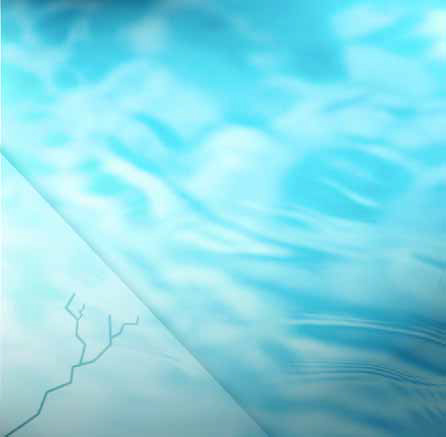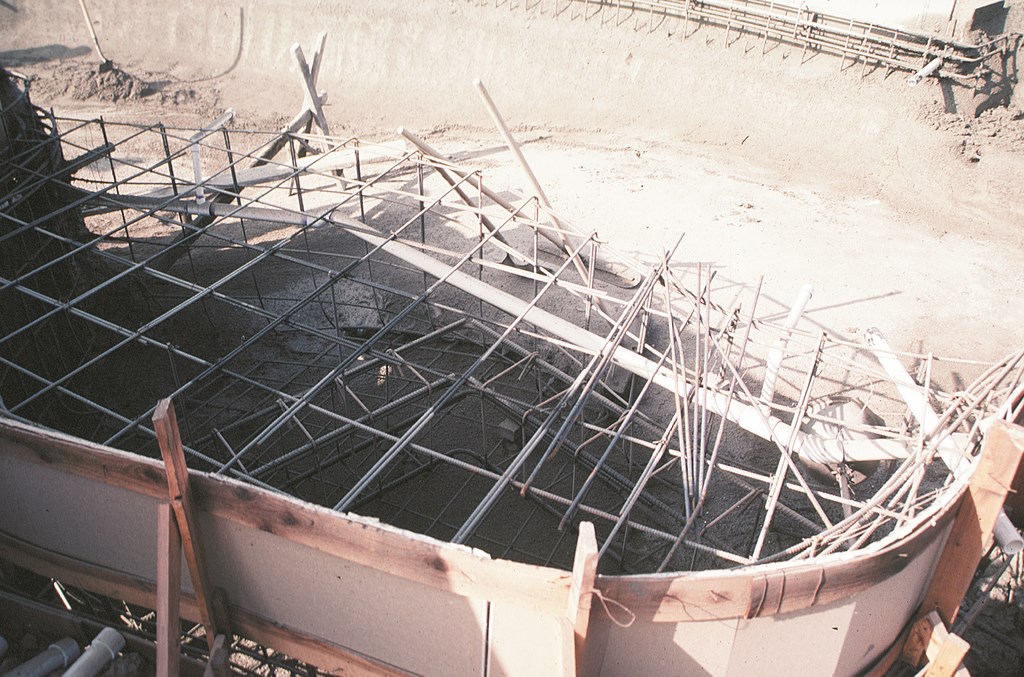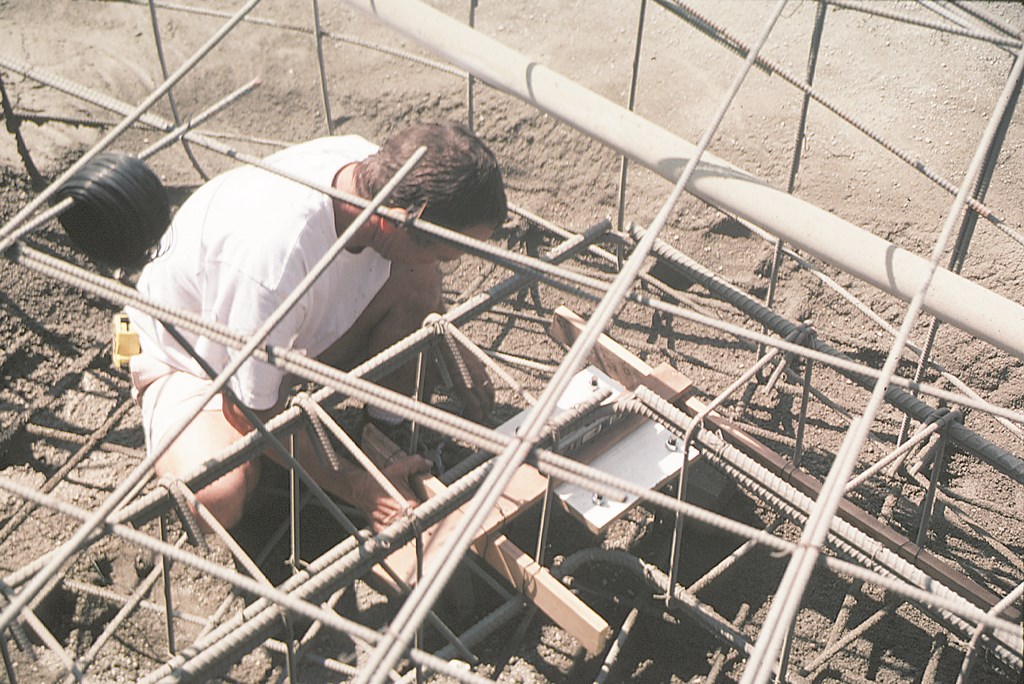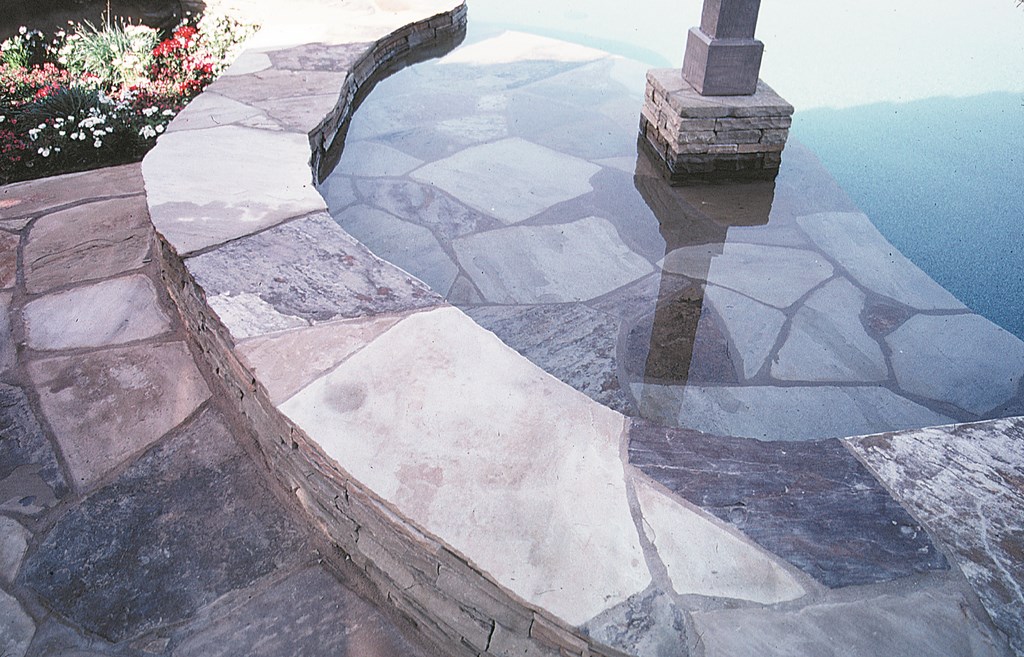Thermal Potential

Some details seem simpler than they really are. A case in point is the one I’ll describe this time – a detail I call a thermal ledge.
In one sense, it’s really just a large a big bench located a few inches below the water’s surface, but in terms of what it is structurally and what it does to increase enjoyment of a pool, it’s something truly special.
The ledge pictured here is visually interesting in the way its stone surface picks up the rockwork used throughout the deck and the barbecue area and within the pool itself. As important, it provides the homeowners and their guests a wonderful and relaxing way to enjoy getting wet:
It’s a great play area for children, a perfect spot for sunbathing, a fine place for enjoying a beverage or just sitting and watching the world go by. You can make it a shady area by installing umbrella stanchions, or you can, as in this case, build a permanent shade structure overhead.
No matter what touches you add, there’s one big point I must make: A thermal ledge is a wonderful detail, but you must do it right or you’ll end up on the wrong end of a serious structural failure.
DOWN TO DETAILS
As is the case with every other structure associated with a pool, a thermal ledge must be properly engineered – and planned from the initial stages in consultation with a structural engineer.
I’ve seen lots of pools where contractors have cantilevered benches beyond the edge of the pool with little or no support, more or less as afterthoughts. But unless the pool has been engineered to handle even that simple an external feature, you’ll see a hinge effect that will lead, later if not sooner, to cracking, leakage and, eventually, structural failure.
| It’s reasonably easy to include a thermal shelf in a swimming pool, but it’s like so many other great design details in that it’s critically important to consult a structural engineer to make sure you get it right. The shelf includes a tremendous mass of steel and concrete: If you follow the specifications, the engineer ensures that the shell will be able to support the extra weight and that the shelf itself will have the required structural integrity. |
If the pool is engineered to handle a cantilever, you’re fine. If not, however, the structure is going to fall apart.
Of course, this is a place where some contractors choose to cut corners, and I’ve seen many projects where the shell isn’t designed to support the weight of the bench and ends up cracking. There’s no way to backtrack: The only solution when the inevitable happens is to tear the whole thing out and rebuild it correctly from the ground up.
I shoot my benches (or ledges) from the floor up using gunite. Alternatively, I’ll fill in with shotcrete from the wall out if the floor and walls have already been shot, and sometimes I’ll pour or cast the concrete in place. However it comes together, my goal is to create a solid mass of concrete and steel in accordance with the engineer’s design specifications.
| In the case of this thermal shelf (and as we saw in the last issue), the section of the grade-beam grid beneath the shelf was set up as part of the support system for a massive overhang. Preparing for this required some work at close quarters within the thermal-shelf void to set up the platform for the post. |
I never, ever use rebound or overspray – a common mistake in building benches – and I apply the concrete over a steel armature using bar sizes and spacing determined by the structural engineer as being capable of supporting so large a mass of concrete.
This approach costs more than doing it the corner-cutting way, but building ledges in this way removes any possibility of damage resulting from movement in the ground, cracking that results from shrinkage or expansion of the concrete, or even movement by earthquake – a major concern in my region.
I also make my thermal ledges fairly wide – four to five feet across in most cases – to provide ample room for a variety of relaxing activities that can be enjoyed by more than one person at a time. The broad surface keeps more water still at a given time, and it also increases the visual “weight” of the ledge.
| Once the shelf was shot, it was topped with the same stone used for the decking and the ledger stone highlighted in Details in the March 2001 issue of WaterShapes. The use of the stone here is another way we set up seamless transitions from the home to the water — continuity of materal as far as the eye can see. |
The stillness is important: When water stays calm over a shallow area, it will warm up more quickly than will the rest of the water in the pool. It’s the same as when a person dives into a pool and experiences different water temperatures at different depths: The thermal ledge works off of this layer-cake principle, and the water warms much more rapidly here.
The visual element is critical as well: Because the surface of the ledge is just inches below the water’s surface, it’s finish is highly visible and it’s always going to attract attention. That’s why I like to put a beautiful finish on these areas, whether I’m working with tile, plaster or, as in this case, stone. I usually pick up a material used elsewhere in the project in some other external detail: It’s a wonderful way to tie the water into the hardscape structures and provide interesting visual transitions.
Sure, a thermal ledge costs a good bit more than a standard bench, especially if you do it right. But given the value it delivers my clients in terms of more (and more varied) use of the pool environment, I think – and they agree – that the investment is worth every penny.
David Tisherman is the principal in two design/construction firms: David Tisherman’s Visuals of Manhattan Beach, Calif., and Liquid Design of Cherry Hill, N.J. He can be reached at [email protected]. He is also an instructor for Artistic Resources & Training (ART); for information on ART’s classes, visit www.theartofwater.com.













